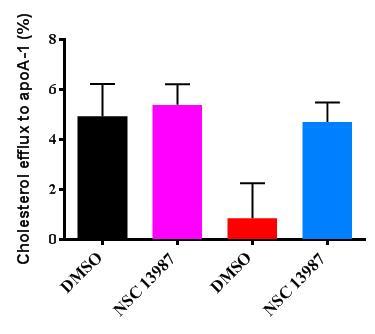HIV-infected patients have high risk of coronary artery disease (CAD). Previously, GW researchers identified HIV regulatory protein Nef as a causative factor in foam cell formation, a precursor condition to CAD. Currently, GW researchers developed compounds that show Nef-neutralizing effects in vitro. The prototype compounds restore cholesterol efflux from HIV-infected cells and prevent HIV-induced inhibition of ATP-binding cassette transporter (ABCA-1) activity.
Inhibition of Nef-calnexin interaction disrupts the ability of HIV-1 Nef to downregulate ABCA-1 and block ABCA-1 dependent cholesterol efflux, which are the mechanisms behind Nef-mediated hypoalphalipoproteinemia and atherosclerosis in HIV-infected individuals.
The technology identifies potential targets that can be exploited to block the pathogenic effect of HIV infection on cholesterol metabolism by characterizing important structural features of the Nef/calnexin interaction and identifying a small molecule compound that blocks this interaction and reverses negative effects of HIV infection on cellular cholesterol metabolism. At present, data has been tested in HIV-infected cells in culture with plans to test the prototype compounds in animal models of HIV infection.

Applications:
· Small molecule therapeutics to prevent or treat HIV-associated atherosclerosis
Advantages:
· First treatment to target cause of HIV-associated atherosclerosis rather than trying to just lower lipids by standard methods